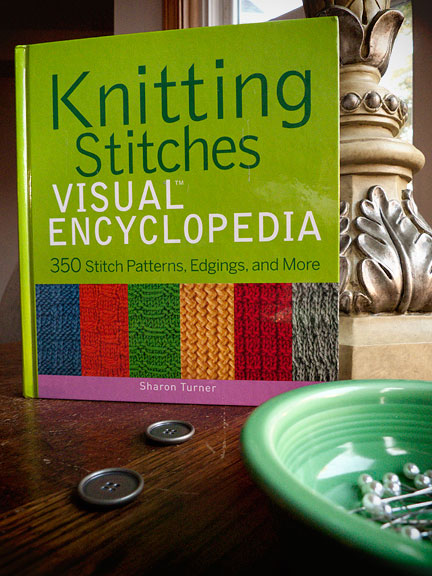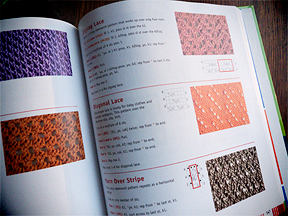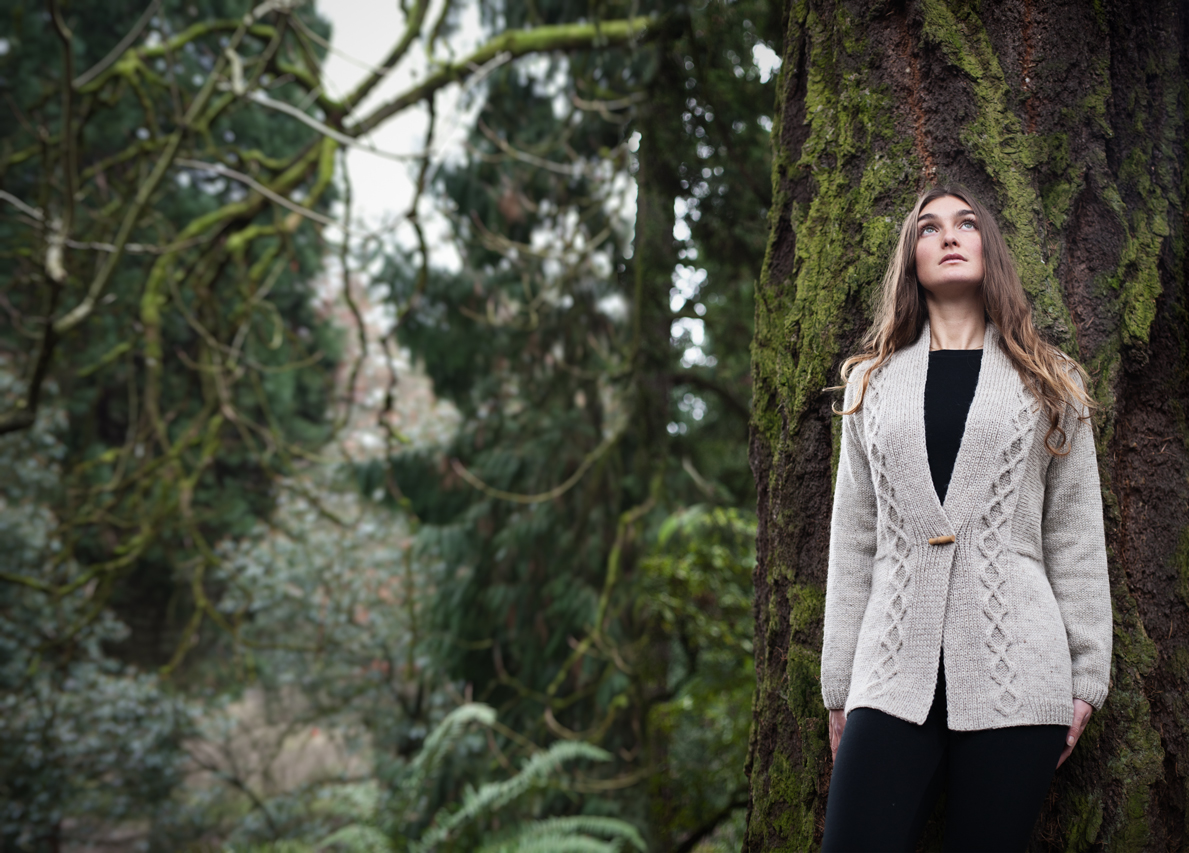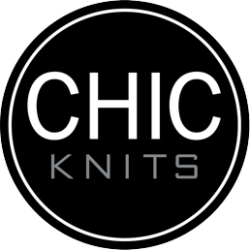
Sometimes, the better part of valor, especially at the end of a busy week, is to just go sit down with a good book, in a warm room and let nature take its course.
Refresh.
Reboot.
I like to get cozy with a cuppa tea and get inspired.
And what is one of the most often grabbed story-books off my shelf? Pattern Dicitonaries!
In them, you find historical paths to glory, signposts to possible future greatness, lovely catalysts just waiting for someone to flesh out into a tangible object.
These combinations of the building blocks of stitchery never cease to amaze and amuse me.
Here’s a collection that landed on my doorstep from the Wiley folks.

Wiley has put out, over the last few years, something they call the “Teach Yourself VISUALLY” series, and this, a stitch encyclopedia with 350 entries is their latest round-up.
What’s the story morning glory?
 Well, being the ultimate fan of stitch tomes, I must say that this one has something that not all of them possess: the book includes both charts and written directions, to as they say, “fully descibe each stitch”.
Well, being the ultimate fan of stitch tomes, I must say that this one has something that not all of them possess: the book includes both charts and written directions, to as they say, “fully descibe each stitch”.
I am a very big fan of charts — in fact, I love knitting with Japanese patterns that come in one size via a chart — as I find they convey information graphically so beautifully.
Think of the this: a picture is worth a thousand words. A chart, once your eyes become accustomed to their framework, delivers the goods like nothing else.
But to really inform all parts of our brain and the way it takes in knowledge, complete written instructions are a wonderful partner to Sir Chart and I love having that option.
Here you have both! It’s a great way for a chart lover to learn the flow of a pattern AND a great way for a write lover to acclimate to the magic of the more graphical anatomy.
For those of us who have basically been to the craft cyber-style born, then cradled and honed by the internet wiki, it’s a must…
I love stitch patterns however they come and this is a great addition to YOUR library.
Leave a comment below about your preference for chart vs written and we’ll random draw next TGIF for a copy of this cool book: Knitting Stitches: Visual Encyclopedia by Sharon Turner…


I’m definately a chart person, with diagrams for schematics, and pictures for clarity. Wordy patterns make my eyes spin.
I learned to knit with written directions and used to remorsefully run from patterns with charts. As a newbie, I didn’t understand the grayed out boxes.
I made myself learn knitted charts by taking a stitch dictionary and a lot of graph paper and force myself to chart the patterns I wanted to use.
I felt like I was cracking the DaVinci Code.
Now I like charts!
I’d love to have a copy of this book. I prefer charts, and will often make my own if there isn’t one provided.
My comment got lost in an “error” so will try again. Charts are definitely the best way to go – more accurate and give you the best view of the pattern. I would love to have a copy of this book.
Nice Fiestaware!
Gimme the charts! My brain starts to fog over when I read written-out lace instructions.
I need written but I’m trying out charts. I’m on my first pattern where a chart has ever made sense… Something has definitely “clicked” in my brain and I think I’m probably going to be better for it
I love to use charts, the ultimate right brained exercise.
I like to have the written directions with the charts to make it all concrete in my brain. On difficult patterns, I have to diagram out the entire piece so I can see how the smaller charts make up the “big picture.” I tape together several sheets of graph paper to make it work, then after a few rounds I don’t need to use the big picture anymore. Just have to get it to make sense in my brain. My friends are amazed that I can get lost in the mall, but can make sense of knitting charts. Go figure!
Charts are the way to go! They let you see how each row is related to the next row. I do have to puzzle a bit with charts of intricate cables. Charted lace is no problem at all.
Just starting down the charted path, but I like it so far!
Written instructions for detail, chart for overall pattern flow at-a-glance!
Yep, charts. When I learned to knit from the written word, even the simplest patterns, I used to draw little charts to help visualize what I was doing.
I like charts for knitting, but prefer the written form when I’m crocheting. Perhaps that’s because I learned to crochet before crochet symbols became widely used.
Charts all the way — though best of all is charts and words too — no misunderstandings.
greetings from Norway! :)
I prefer written patterns. i am a member of a chart hater group on Ravelry ;-D
Charts, I say. Allows me to see the whole picture.
I will say my opinion has changed the longer I have knit. I used to be written patterns all they way, even going to the bother of translating charts for myself. Now if I have a chart, I will use that almost exclusively when knitting an allover lace pattern. It is much less daunting to see a half page chart, than it is to see a whole page of text. It’s all the same of course, but somehow it makes things go faster.
Definitely charts all the way!! I am using an old 1960’s pattern for a lacy baby dress right now and am forever losing my place in the words – may in fact take the time get some graph paper and and chart it out myself! Chanting charts, charts, charts :)
Started with written and am slowly learning to read charts. I’ll get there someday.
Charts! Learning to work from charts changed my life:) I really love Japanese patterns, too. Once you learn to decode them, they are a lot of fun. Although it would never fly in the States, I think it is very sensible to standardize a pattern format.
I do like written knitting patterns, especialy if they include charts for stich patterns, but written crochet patterns for complex designs are usually a nightmare, and I find it very easy to get lost.
I’m not accustomed with chart, but… i know i should. I have a very old book from my dead grand-mother with pattern stitches and, like you, i like to just turn the pages and make me inspired!
I like having both chart and written instructions. I’ve become much better at reading charts, but sometimes it’s nice to double-check what you think you’re supposed to be doing with the written directions.
I like charts best- something about the way they help me visualize things.
I much prefer charts to the written instructions. Having said that, I have learned that if there might possibly be an error, the written instructions are better.
awesome book! i love charts in knitting..so easy! but when i crochet i love written instructions instead…weird right!
I’m really a chart person but sometimes written instructions can clarify a chart – or vice versa!
I like to use written out patterns.
I’m new to charts – still need the crutch of the written word from time to time. Thanks for the great giveaway opportunity.
can i say i like both? i like charts but like having written instructions just in case something isn’t clear.
Written. But can do a chart if needed.
I would love a copy of this! I like written instructions better :)
Charts used to intimidate me, but now I like them very much since it’s so apparent when you make a mistake and it’s easier to see where your mistake lies. This book looks like a great combination of written and charted instructions. I think it would be great since when I’m converting from written to a chart, I’m never quite sure I’ve done the ‘translation’ correctly.
I started knitting back in the dark ages before there were any charts, however after my first project w/ charts, I bacame a fan. It’s so much easier to figure out where you went wrong with a graphic chart!!
I’m a written instructions person but like many who have commented, if I have both, I feel I’m less likely to go astray.
Well, I have been ascared of charts for a long time. BUT, I have started on my first charted pattern, a pretty cowl for my daughter for Christmas and I have not DIED yet…..just a little heart palpation and squinty eyes. So, no favorite yet. The jury is out……
I much prefer charts, although there are some times when the symbol use makes it harder to understand. I like having both so I can use one as backup for the other.
I much prefer charts to written out directions because I really like how the charts give me a better perspective as to how the row I am knitting corresponds to the previous rows.
I generally prefer charts for complicated patterns or regular repeats and written patterns in situations where there’s a lot of plain knitting with a few (for example) increases or decreases. I like not having to count the stitches on the chart when there are enough that it isn’t obvious at a glance. If I had to choose one thing it would be an easy-to-read chart with numbered rows and columns.
Wow, what a great book! I love encyclopedic books about patterns to knit.
When knitting I prefer a written chart. I end up repeating it for myself every row like a mantra. That is the best way – for me – to get the hang of the pattern.
I love stitch encyclopedias! I’m definitely a chart person – even when I have to rechart something because of unusual symbols (as is the case with a German pattern collection I have).
I’m a big fan of charts; they make things so easy for me to follow. Charts also bridge language gaps and my Chinese colleagues at Northwestern U are always on the lookout for good charted stitch patterns.
I learned to knit with written charts, but am working on becoming more chart-savvy. I also enjoy ‘reading’ stitch dictionaries & am planning some winter scarves using some intriguing stitches. Yeah for scarves being ‘in fashion’ now!
OH I love charts!!! They are so easy to follow…though sometimes when I first start a charted pattern I like to read over the written pattern to make sure I’m doing it right!
i have been anti-chart for a long time. but, recently i find that to really incorporate a stitch into a pattern the way i want to, it helps oh so much to see it charted out so i can better mutate it. smile.
I am more used to and prefer written directions. However, if a patten has both I find myself trying to concentrate on the charts so I become more used to them.
I prefer written patterns as symbols are harder for me to remember, but this would be a great way to practice them together. I would love to improve my chart reading skills.
Charts, charts, charts …. easy to follow, lesser mistakers, easier to take with you.
I’m fine with both charts and written instructions, but if there is only one version of the instructions I’m always voting for the charts.
I prefer written instructions but would like more practice with charts :-)